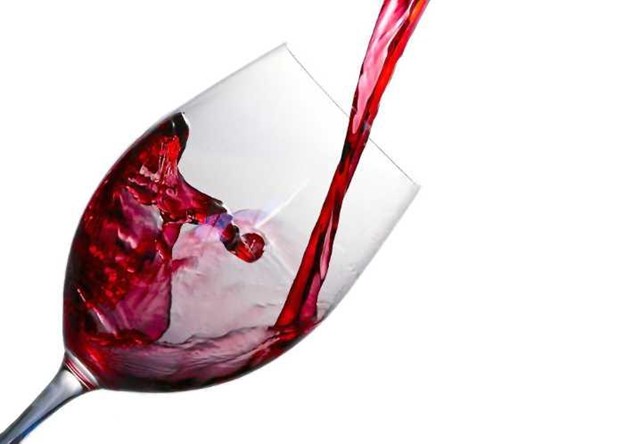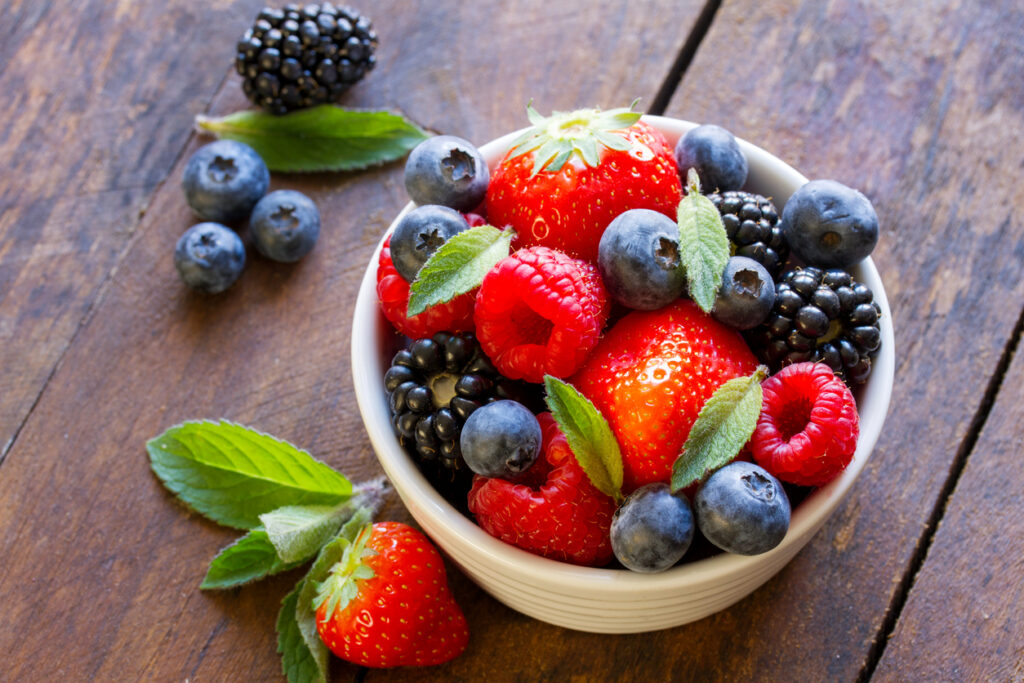A glass of wine can be an enjoyable part of a meal or a relaxing evening, but how many calories are in that glass? As it turns out, the calorie count varies widely depending on the type of wine and size of pour. Knowing how many calories you’re consuming when you drink a glass of wine is important for those who are mindful about their health and dietary habits.

Key takeaways
- The calorie intake when drinking a glass of red wine strongly depends on the wine and grape
- Alcohol in the wine is the main source for calories in one glass
- The lowest calories in a glass are in dry wines especially dry sparkling wines (zero dosage) without added sugar
- Highest wine calories are found in fortified wines or dessert wines
What`s in wine?
Wine has a unique flavor that comes from the combination of several compounds, including water, alcohol, sugar, and other flavor components but how many calories in a glass of wine. The precise composition of these elements varies by type of grape and wine making method.
Water is an essential component in wine as it makes up around 85-90% of its total volume. Alcohol makes up 8-14%, while sugar content depends on how sweet or dry the wine is intended to be. This residual sugar can vary from 0% to 30%. In addition to these three main components, there are also various types of acids, tannins and phenolic compounds that contribute to a wine’s overall flavor profile.

Where do the calories in wine come from?
When it comes to wine and calories, many people are curious about where those calories come from. Wine is an alcoholic beverage that contains both carbohydrates and alcohol, so it’s important to understand the different sources of these calories.
The majority of the calories in wine come from alcohol. The type of grape or other fruit used in making the wine can affect the amount of residual sugar that is left over after the fermentation process. This also contributes to the calorie content especially for sweet wines. When grapes are harvested they contain 18-25 % sugar which is turned into alcohol during the fermentation process.

Red wine calories rule of thumb
As a rule of thumb, drier wines will contain fewer residual sugars while sweet wines will have more residual sugars present. Additionally, fortified wines such as port and sherry have higher levels of alcohol than non-fortified wines which results in a higher calorie count per serving size.
How many calories in a glass of red wine
When it comes to enjoying red wine, one of the most common questions is: how many calories in 1 red wine glass? Red wine has been proven to be beneficial for heart health and blood vessels. It contains antioxidants like the antioxidant resveratrol that can help reduce inflammation. But at what cost?
How many calories in the different types of red wine?
The calories in red wine differ depending on the types of red wines due to their specific characteristics. For instance, lighter bodied red wines like Pinot Noir typically contain fewer calories than more robust varieties like Malbec or cabernet sauvignon.
Similarly, higher alcohol content wines tend to contain more calories than those with lower levels. In addition, some brands like the Apothic winery or Yellowtail winery might add sugars (condensed grape juice) or other ingredients that increase the calorie count further. So what is the calorie count for the different types of red wine?
1 glass of red wine is in most cases less than you drink when meeting friends. In two glasses of red wine you will have arount 250 calories.

How many calories in a bottle of red wine?
As a red wine lover you surely have asked yourself how many calories are in your favorite bottle of cabernet sauvignon, bottle burgundy or bottle sangiovese. This depends on the amount or residual sugar as well as the alcohol content. You need to differ between alcohol calories and residual sugar calories. Per the USDA the calories in 1 glass of red wine are as follows:
| Varietal | Calories in a glass | Alcohol conten (ABV) | Residual Sugar (g/l) |
|---|---|---|---|
| Carignan | 109 | 12,5-15 % | 10 |
| Gamay | 115 | 10,5-12,5 % | 1,5-2,0 |
| Merlot | 120 | 13,0-14,0 % | 1,0-1,5 |
| Pinot Noir | 121 | 11,0-14,0 % | 1,0-1,5 |
| Syrah | 122 | 13,0-15,5 % | 0,3-1,0 |
| Grenache | 122 | 13,5-16,0 % | 2,0-3,0 |
| Cabernet Sauvignon | 122 | 13,5-15,0 % | 3,0-4,5 |
| Barbera | 125 | 13,0-15,0 % | 2,5-3,5 |
| Sangiovese | 126 | 13,0-14,0 % | 1,5-3,0 |
How many calories in a large glass of wine
A large glass of wine can be an enjoyable part of a night out or dinner gathering, but it’s important to know how many calories are in your favorite tipple. It’s not always as easy to estimate as you might think!
Calorie content in wine depends on several variables: the type of grape used, the alcohol content and sweetness. Red wines or dessert wine tend to contain more calories than whites due to their heavier body and higher alcohol content. A typical large glass (175ml) of red wine will contain around 160-220 calories depending on the specific variety and ingredients used.
On the other hand, white wines or sparkling wines tend to contain fewer wine calories because they have lower alcohol levels and are generally sweeter than reds. A large glass of white wine (175ml) typically contains between 120-180 calories depending on its exact makeup.
How many calories in a glass of white wine
A glass of white wine can be a great way to relax after a long day, but it’s important to know what you’re drinking. Knowing how many calories are in white wine or dessert wine can help you make the most informed decision when it comes to your health and lifestyle.

How many calories in the different types of white wine?
Studies have shown that a standard glass of dry white wine contains around 120-130 calories per 5oz serving. While this may not seem like much, those who drink regularly should take into account the regular consumption and the added calories that can quickly add up each week. Additionally, different types of wines contain varying amounts of calories, so if you’re looking for something light or sweet be sure to check the wine label before pouring yourself a glass!
The calorie count for the different types of white wine depends on the alcohol content as well as the residual sugar content
How to calculate red wine calories?
Calculating how many calories are in a glass of red wine can be an important factor for health-conscious adults. Red wine is usually made from dark-skinned grapes, and contains alcohol and trace amounts of other substances like minerals, carbohydrates, and acids. Knowing the average amount of calories per serving of red wine can help you maintain a healthy diet while still enjoying the occasional glass or two.

To calculate the calories in a glass of red wine, you need to know how much alcohol it contains by looking at its ABV (alcohol by volume) percentage on its label. Generally speaking, one alcoholic drink contains 14 grams of pure alcohol which translates to about 100 kcal per drink. Therefore, if your bottle has an ABV percentage of 12%, a 5 ounce glass will contain about 120 calories. In general you can use the following formula to calculate the calorie intake from a bottle of red wine:
Ounces x ABV x 1.6 = alcohol calories
Your favorite 750 ml bottle of red wine contains 25 ounces of red wine.
Nutritional value of wine
Wine has been a staple beverage in many cultures for centuries. Not only is it a popular choice when it comes to drinks, but it also contains some significant nutritional value. Recent research has revealed that wine can provide numerous health benefits due to its antioxidant content.
How many calories in a glass of Apothic wine
An Apothic Wine glass has become a popular choice for many wine lovers to enjoy. But how many calories are in this particular type of wine?
Apothic wines come in a variety of types, ranging from light and refreshing to bold and full-bodied. The calorie count depends on the type and size of the bottle you choose. Generally speaking, a 5 oz glass of Apothic Red contains around 120 calories while an 8 oz serving has 166 calories. However, some varieties may contain higher or lower amounts depending on their composition and alcohol content.
When selecting your preferred Apothic Wine variety, it’s important to be aware of the calorie content per glass so you can make an informed decision about how much you should consume.
Antioxidant properties of red wine
The antioxidants found in wine are known as polyphenols and they help fight off free radicals from the body, which can lead to cell damage and various diseases. Studies have also shown that moderate consumption of red wine can reduce the risk of certain cancers.

Vitamins in red wine
Aside from this, red wines are a good source of vitamins such as Vitamin A, Vitamin E and Vitamin D. Drinking wine almost seems like a balanced diet but unfortunately it is not. You should watch your alcohol intake.
Most wine labels give only the alcohol content and information on the wine and the winery. This is the case for most wines produced in Europe. You can get basic nutritional information as acidity, residual sugar and alcohol content from the wine datasheets.
In the USA alcoholic beverages aren’t regulated by the FDA, but by the Alcohol and Tobacco Tax and Trade Bureau (TTB). The TTB does not require nutritional labelling.

Low calorie wines
Low calorie wines are becoming increasingly popular for those looking to enjoy a glass of vino without all the extra calories. While there are no real strict guidelines, generally speaking, most wines can range from as low as 80 calories per glass to upwards of 150 calories in the same serving size. So how do you choose the lowest calorie wine?
When it comes to choosing lower calorie wines, there are several important factors to consider. The first factor is alcohol content; typically, the lower the volume of alcohol (ABV), the fewer calories contained in that particular wine.
The lowest calorie wine you can get are therefore wines without alcohol or low alcohol wine without additional sugar!

High calorie wines
When it comes to wine, the image conjured up is usually one of relaxation and luxury. But what many do not know is that some wines contain an incredible amount of calories. For those looking for a hefty dose of energy, here is a look at the highest calorie wines on the market.
Red wines tend to have more calories than lighter counterparts such as rosé or white varieties. This is due to their higher alcohol content as well as their fuller body. At the top of this list are fortified wines like port, sherry and madeira which can contain 250-500 calories per glass! But even still, some non-fortified wines like red cabernet sauvignon and syrah can be just as calorific with upwards of 230 calories per glass.
Health benefits of red wine
Red wine has been a popular beverage around the world for centuries. Some people consider it to be packed with empty calories. Recently red wine has become known for its potential health benefits. But before you start stocking up on bottles of syrah and pinot noir, it is important to understand that red wine does come with certain risks, including the risk of developing certain diseases or conditions due to overconsumption.

The good news is that moderate consumption of red wine can bring positive health effects. Studies have shown moderate amounts of red wine can lower the risk of heart disease as it increases HDL cholesterol (the “good” cholesterol) which helps keep arteries clear from plaque buildup. Another benefit is that antioxidants found in red grapes, such as resveratrol, may help reduce inflammation associated with arthritis and other chronic diseases.
Conclusion
If you want to watch your calorie intake to avoid weight gain while drinking red wine you can easily do so by choosing the right red wine. You don`t have to feel guilty sipping – Enjoy

